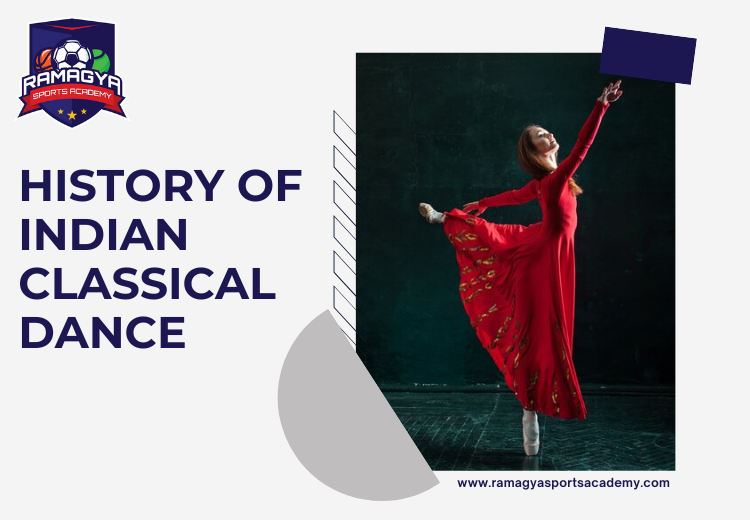
Rabeeb Ali Khan Wins Gold in Lawn Tennis Championship
August 28, 2024
Mrs. Meenakshi takes top spots at the MT100 Gurugram ITF World Tennis Masters tournament
August 31, 2024History of Indian Classical Dance
 Indian traditional dances are colorful, energetic dance forms that have evolved over thousands of years, showcasing the country’s rich history and variety. They have their roots in old manuscripts and religious customs on the Indian subcontinent. There are many different kinds of Indian classical dance, each having its own techniques, aesthetics, and cultural significance.
History of classical dance has its roots in ancient manuscripts and illustrations from the Indus Valley Civilization, when dance forms were depicted on seals and ceramics. In several parts of India, dancing has developed over time as an essential component of religious rites, narratives, and cultural expression.
Bharatanatyam is one of the oldest traditional dance forms. It was developed inside Tamil Nadu’s temples and is distinguished by its elaborate dancers, elegant motions, and emotive expressions. Similar to this, Odissi, which has its roots in the temples of Odisha, is well known for its graceful movements, expressive stances, and poetic narration.
Other classical dance styles include Andhra Pradesh’s Kuchipudi, Kerala’s Mohiniyattam, and Manipur’s Manipuri. Each has its own unique form and style. Every Indian classical dance style, despite regional variations, shares basic features such as rhythmic patterns, abhinaya (expression), and hand gestures used by dancers.
In the present, Indian classical dance has gone beyond the traditional boundaries, earning acceptance and recognition on the international and national stage. The world’s most renowned choreographers and dancers continue to develop and adapt traditional dance forms to current themes, guaranteeing their vitality and relevance in the 21st century.
Indian traditional dances are colorful, energetic dance forms that have evolved over thousands of years, showcasing the country’s rich history and variety. They have their roots in old manuscripts and religious customs on the Indian subcontinent. There are many different kinds of Indian classical dance, each having its own techniques, aesthetics, and cultural significance.
History of classical dance has its roots in ancient manuscripts and illustrations from the Indus Valley Civilization, when dance forms were depicted on seals and ceramics. In several parts of India, dancing has developed over time as an essential component of religious rites, narratives, and cultural expression.
Bharatanatyam is one of the oldest traditional dance forms. It was developed inside Tamil Nadu’s temples and is distinguished by its elaborate dancers, elegant motions, and emotive expressions. Similar to this, Odissi, which has its roots in the temples of Odisha, is well known for its graceful movements, expressive stances, and poetic narration.
Other classical dance styles include Andhra Pradesh’s Kuchipudi, Kerala’s Mohiniyattam, and Manipur’s Manipuri. Each has its own unique form and style. Every Indian classical dance style, despite regional variations, shares basic features such as rhythmic patterns, abhinaya (expression), and hand gestures used by dancers.
In the present, Indian classical dance has gone beyond the traditional boundaries, earning acceptance and recognition on the international and national stage. The world’s most renowned choreographers and dancers continue to develop and adapt traditional dance forms to current themes, guaranteeing their vitality and relevance in the 21st century.



